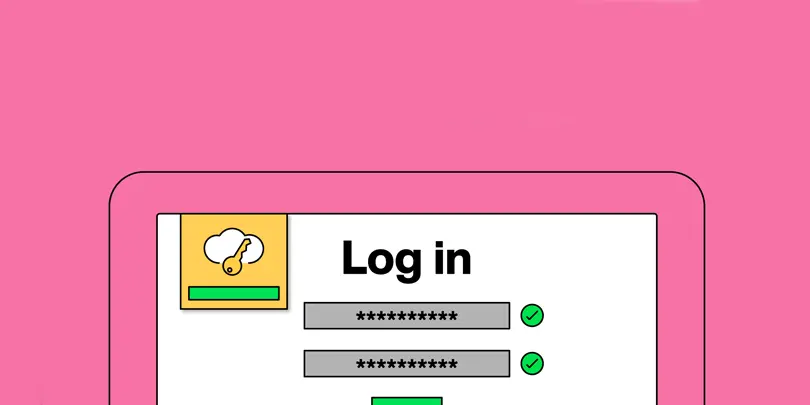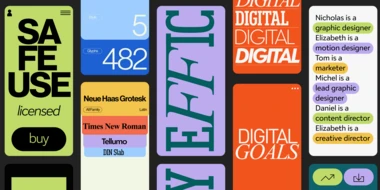The cloud has changed the way companies should license fonts. Here’s why.

The way we work, including how we use and share fonts, has changed dramatically in the past couple of decades.
Until recently, font licensing had stayed the same. Now font licensing is finally catching up to the innovations in work. If your organization has changed the way it creates, distributes, and edits documents containing fonts, it’s probably time to update the way you license fonts.
Desktop font licensing: A relic from a different time.
The “desktop” in desktop licensing is quite literal. Desktop licenses are meant to be installed on individual users’ workstations (or desktop computers), where the font may be used to create designs, content, mockups, JPGs, and other non-digital assets. This is how creative work was done for decades, resulting in a simple workflow and equally simple licensing: every user and workstation that was used to create content had its own desktop license for any required fonts. Content creators were typically the only people who ever needed access to certain fonts; it was rare for anyone outside of the creative department to make any edits to templates or designs. Many organizations still have this mentality and licensing structure in place even though their workflows have changed significantly.
Today, many organizations have sought greater efficiency and productivity through the adoption of cloud content management systems. More people are equipped with content authoring tools to create or edit content, and whether they realize it or not, it’s common for these content creators to embed fonts in documents that are then uploaded to the cloud. “Embedding” fonts simply means that the font file is included within the document, which ensures that the typeface renders correctly on any computer. In many cases, this happens automatically without the content creator knowing. Once in the cloud, these files could be accessed and edited by anyone in the organization, regardless of their font licensing status.

This is where traditional desktop licensing breaks down in the cloud-based workplace. To be properly licensed for the fonts your organization uses, everyone who can access font software needs a license. In the old model, that access was limited to the number of individual users or workstations covered by your desktop license. Usage was easy to track and manage. In the new, cloud-based world, however, anyone who can log in to your cloud content management systems has access to any font embedded in the documents stored there. Put another way, access is essentially unlimited, at least within your organization. This discrepancy can leave companies wildly out of compliance with their desktop license agreements.
Licensing for the cloud: Simple and comprehensive.
Most companies are not yet licensed for broad font access, which means they’re at risk. But as the working world evolves, so do the options for managing your digital assets. The company desktop license is a new licensing model that covers everyone with access to your organization’s cloud environment and enables seamless cloud authoring and document sharing across the company.
Should your organization think about updating its font licensing model? Let’s find out:
- Do you use a digital asset management system, content management system, or other cloud-based tools for storing and sharing content organization-wide?
- Do you use single sign-on (SSO) to grant access to company files?
- Does anyone outside of the content creation teams have access to their documents through the cloud?
- Do you have templatized documents that are personalized or localized by different teams?
- Do you share files with external printing vendors for packaging, labeling, and similar needs?
- Do individuals or teams collaborate on documents stored in a cloud environment?
If you answered “yes” to any of the questions above, it’s probably a good idea to consider a company desktop license. Switching to a company desktop license can ensure font license compliance as well as make cloud authoring and document sharing easier and more seamless across the organization.
Our company desktop license is customizable based on your organization’s unique structure and size, and it’s even more cost-effective than issuing desktop licenses to each workstation. Still have questions? Ask us!














